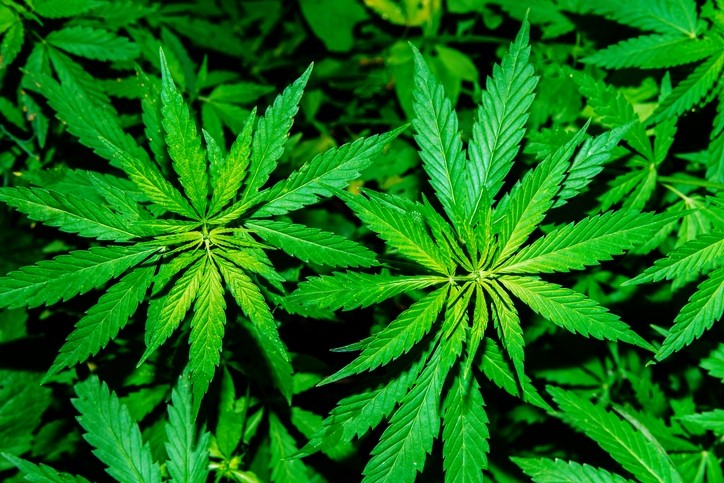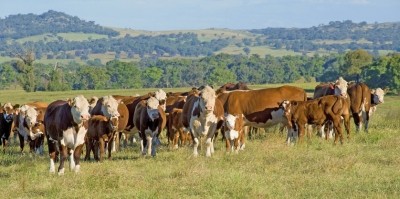Hemp groups seek regulatory approval for in-feed use

Regulatory changes in the US now allow for groups like the Hemp Feed Coalition and Friends of Hemp to bring product applications to the US Food and Drug Administration (FDA) for approval, said Annie Rouse, founder and president of Friends of Hemp.
The Kentucky-based non-profit organization provides educational programming and supports research into developing a market for industrial hemp and hemp derived products, she told FeedNavigator.
It also has been working with the Hemp Feed Coalition to expand the approved use of hemp-derived ingredients like oil, hemp seed, hemp protein or hemp hearts in feed.
“You kind of have to have the financials in place to move forward with the FDA – you submit an application to them, then they provide [research study] protocols,” she said. “The University of Kentucky did a relative feeding value on silage in 2015 and they found that the relative feed value is similar to alfalfa, but a study like that and a lot of others being performed aren’t necessarily meeting FDA protocols – so the first step is to [meet] the protocols.”
Initially, the group is working to have the use of cold-pressed hemp oil approved for use in companion animal diets, she said.
However, looking forward there could be a role for ingredients like hemp protein, oil or hemp seed in the diets of cattle, poultry, swine and fish, she added.
“It’s definitely something [for which] we realized there was a market opportunity,” she said regarding the potential for hemp ingredient to be used in aquaculture feeds. “Fish get all their omega-3s from algae, they don’t create it themselves, so being able to feed hemp seeds that are high in omega-3 to fish, under aquaculture conditions, would be ideal.”
The Hemp Feed Coalition also is working on the project, said Hunter Buffington, program coordinator with that group.
“It needed to be a unilateral effort,” she added regarding the approval process.
The organization includes several industry stakeholders and has a focus on growing agricultural and hemp industry markets by shepherding hemp-based ingredients through the feed approval process with the FDA’s Center for Veterinary Medicine.
Although industrial hemp production in the US is starting its fourth year of production, the ingredient and cannabinoid profiles for all ingredients are not yet known, she said. That information is needed for the ingredient approval process.
“What we’re really offering is for industries to come together and work on the approval so everyone benefits,” said Buffington. “The reality is that anytime you’re trying to cross industries and build a market it takes some time.”
Definition of industrial hemp
In the Farm Bill, industrial hemp is defined as all parts of the plant Cannabis sativa L with a delta-9 tetrahydrocannabinol (THC) concentration that is 0.3% or less based on a dry weight basis.
Hemp and marijuana are the same species of plant, added Buffington. However, they are differentiated by the cannabinoid profile in the plants.
While hemp contains a very low concentration of THC (0.3% or less), marijuana is abundant in THC with concentrations between 15% to 40%.
Because of this, hemp is grown primarily for industrial purposes, while marijuana is grown for recreational and medicinal purposes.
In the EU, varieties of hemp cultivated and used for feed must be listed in the EU Official Catalogue of seeds. The varieties of hemp must not have a THC level exceeding 0.2% (EC No. 1124/2008) and the onus is on each EU member state to establish a system of verification for THC in hemp.
Farm Bill
The most recent US Farm Bill or the Agriculture Improvement Act of 2018 passed and was signed into law in December 2018. It amended some regulatory provisions relating to the growth and production of industrial hemp.
The legislation allows for national agricultural research funding to be used in hemp research and allows for the domestic production and sale of industrial hemp.
“In general, the opportunity to no longer be considered as dangerous as heroin is a huge benefit,” said Rouse regarding the implications of the regulatory changes in the new Farm Bill. “We’ll be able to have access to federal funding for agricultural grants and innovative grants … that were not available even with the 2014 Farm Bill.”
Hemp ingredients and feed research
Currently, Friends of Hemp is working with the FDA to prepare its initial feed ingredient application, said Rouse. However, this is anticipated to be the first of multiple proposals exploring several ingredients with multiple species – both livestock and companion animals.
Starting with companion animals may allow the research process to move more quickly, she said. Studies with production species like cattle or poultry are expected to take longer to complete.
“Companion pets are significantly less time because we’re not taking that animal to slaughter and consuming it ourselves,” said Rouse. “The ones that we’re consuming, like cattle and poultry, those we’ll need to do lifecycle studies – from the day they’re born all the way up to slaughter – so we can tell how the hemp seed oil or whatever the ingredients are might bio-accumulate in the body and might be passed on to us when we eat it.”
Trials for products aimed at inclusion in cat or dog food might take 30 days, while a lifecycle study for a cow lasts two years, she said. “The longer the timeline the more expensive the study is,” she added.
“It totally depends on the animal and ingredient, but we’re looking at about $250,000 per animal per ingredient – so we’re probably going to need to raise $7 to $10m,” she added.
The groups are looking to industry members that might be interested in using hemp-based ingredients to support the regulatory push, she said.
“At this point, most of our fundraising efforts have been within the industry to make the industry realize what we’re doing, and realize the importance of it, and get that financial backing so when we go out with the specific animals so we can showcase industry support,” Rouse said.
Future approval projects will be determined by the funding and industry support available, she said.
Looking forward, the group is hoping to have funding arranged to start the application process with cattle by the end of 2019, in addition to starting work on the approval process for hemp-based protein, she said.
The push for approval of potential feed ingredients is already seeing some industry interest. At the end of 2018, the Hemp Feed Coalition raised $25,000 to support its regulatory work.
Canada-based True Leaf Medicine International Ltd. recently provided about $10,000 in matching funds to support the work that both organizations are doing. The company is a member of the Hemp Feed Coalition.
Hemp-based ingredients are of interest because hemp seed provides high levels of protein and fat, said Darcy Bomford, CEO, TrueLeaf.
“We always saw it as an incredible, nutritional ingredient,” he added.












